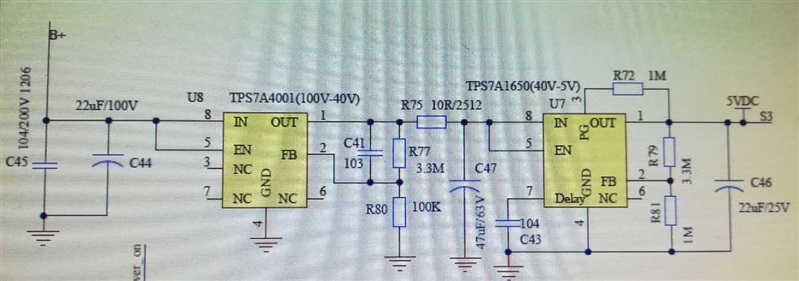Hi team,
It is found that TPS7A4001 is easy to be damaged when the battery is attached to the circuit.
Now a 80V battery is used for the input of TOS7A4001, the output is 40V, the typical load is about 2mA in the application.
Below is the schematic.
The damaged has been seen for pin FB and Pin OUT (both or one of them), the impedance is usually about 350~500Ohm for between OUT and GND, FB and GND, OUT and FB.
I have checked the waveforms on VIN, OUT, FB, EN pin, no large peak(almost no overshoot)voltage have been seen, all are in the spec of datasheet. (during start and steady state)
After that, I also checked the output current during start. (The current of R75, other wires have to be cut, not easy to test, still no enough time) Large current could be observed, see below.( Yellow: input voltage; blue: output current)
It seems soft start doesn't make some impacts. Why? Is it related to high dv/dt?
Thanks.



